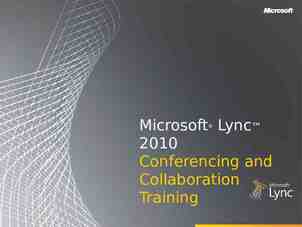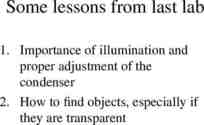New Concepts for Fatigue Thermomechanics Nasr M. Ghoniem Contributors
20 Slides6.89 MB
New Concepts for Fatigue Thermomechanics Nasr M. Ghoniem Contributors S. Sharafat, R. Ungureanu, P. Kachgal, Matteo Cova, Gaicomo Po University of California, Los Angeles (UCLA) High Average Power Laser Program Workshop Naval Research Labs Washington, D.C. December 5-6, 2002 07/14/24 1
Outline 07/14/24 HAPL Modular Chamber; Pressure Effects; Transient Thermal Stresses; New Power Module Concepts. 2
UCLA’s Design of the HAPL Chamber Section of Chamber View of Chamber Exterior (piping and support structure not shown) 07/14/24 Inside View of Chamber Section (showing the FW-Panels) 3
HAPL Chamber with Piping & Laser Beams 07/14/24 4
FW/ Blanket Module Details Partially Assembled FW-Panel Coolant Flow: Blue: In Red: Out 07/14/24 5
Pressure Analysis Transient Dynamic: 3 mm panel w/o coolant 1 cm panel no coolant Static Pressure: 3 mm panel with supporting rib structure & 0.5 MPa coolant pressure 07/14/24 6
HAPL First Wall Panel With Rib Structure, 3-mm F82H Meshed (Shell Elements) Fixed Edges and Ribs 0.5 MPa Coolant Pressure
Coolant Stresses & Pressure Profile (UCSD results 3-mm thick FW Pressure Input to Dynamic Analysis Von-Mises Stress for coolant Pressure of 0.5 MPa 07/14/24 8
Displacements & Stresses for a 3-mm FW Without Ribs & Coolant 4.0E 06 3.5E 06 3.0E 06 2.5E 06 SX STRESS (Pa) 2.0E 06 2.0E-05 DISPLACEMENT (m) 0.0E 00 SY EQV 1.5E 06 1.0E 06 5.0E 05 0.0E 00 -2.0E-05 -5.0E 05 -4.0E-05 -1.0E 06 -6.0E-05 -1.5E 06 0.000 -8.0E-05 0.020 0.040 0.060 0.080 0.100 TIME (s) -1.0E-04 -1.2E-04 -1.4E-04 -1.6E-04 0.0E 00 2.0E-02 4.0E-02 6.0E-02 8.0E-02 1.0E-01 TIME (s) 07/14/24 9
10-mm Thick Wall With Coolant 6.0E 07 4.0E 07 Syy Sxx 2.0E 07 Coolant Pressure : 0.5 MPa STRESS (Pa) 0.0E 00 8.0E-03 -2.0E 07 -4.0E 07 7.0E-03 -6.0E 07 DISPLACEMENT (m) 6.0E-03 5.0E-03 -8.0E 07 4.0E-03 -1.0E 08 0.0E 00 3.0E-03 2.0E-02 4.0E-02 6.0E-02 8.0E-02 1.0E-01 TIME (s) 2.0E-03 1.0E-03 0.0E 00 0.0E 00 2.0E-02 4.0E-02 6.0E-02 8.0E-02 1.0E-01 TIME (s) 07/14/24 10
Fracture Mechanics of Fatigue Cracks Fast Fourier Transform for the mean stress and the first three harmonics: m 1.65456 MPa a1 .52412 MPa a 2 .28454 MPa a 3 .23264 MPa eff a1 a 2 a 3 1.03MPa K Y eff a K K max K min da C PE ( K ) n dn CPE 5 10 9 , m 3 3 da 9 5.3 10 2 1.05 a dN Gives N 2.63 109 cycles 07/14/24 [1] R.L. Klueh and D.R. Harries, "High-chromium ferritic and martensitic steels for nuclear applications", ASTM Monograph 3 (ASTM, West Conshohocken, PA, 2001) 221 pp. 11
FEM Calculations of Maximum Surface Temperatures (with Blanchard, UW) W/ODS Interface 3000 UCSD Limit W (5-50 μ) 2000 W-Surface 1500 LAFS (2 mm) ODS (1 mm) Temperature Profiels (UCSD) W/ODS Interface 3500 3000 1000 surface 2500 Temperature (C) TEMPERATURE (C) 2500 500 0 2000 1500 1000 0 5 10 15 20 25 30 35 W-THICKNESS (microns) 40 45 50 500 0 -12 -6.08 -5.57 -5.35 -5.2 -2.79 -1.7 -1.42 -1.25 -1.13 -1.03 Log (tim e) 07/14/24 12
Estimated Stresses W/ODS Interface 4500 4000 W (5-50 μ) 2500 ODS (1 mm) W-Surface 2000 5.5E-05 W/ODS Interface 5.0E-05 1500 1000 500 0 4.5E-05 4.0E-05 3.5E-05 3.0E-05 2.5E-05 0 10 20 30 40 W-THICKNESS (micron) 07/14/24 LAFS (2 mm) 3000 THERMAL DIFFUSIVITY (m 2/s) STRESS (Mpa) 3500 50 60 2.0E-05 0 500 1000 1500 2000 2500 3000 3500 4000 TEMPERATUE (C) 13
New Concepts are Needed for FW!! FW Coolant better be contained in small-diameter tubes; Mechanical Fatigue Problems are Manageable with Stiffer Curved Surfaces; X-Rays and Ions Will Lead to Severe Plastic Deformation of W Surface (Ultimate Strength at 2000 K 100 MPa) & Fracture (Toughness 10 MPa (m)-1/2) Helium Blistering Will Lead to very Short Lifetimes; APPROACH Reduce Lateral Constraint for the Thermal Stress Problem Small Feature Size for Helium Management 07/14/24 14
Solution 1: Patterned W Surface with Small Feature S (2 microns) Using MEMS Technology MEMS-Based Surface Morphology UNIT-Structure Thermal Analysis of UNIT-Structure ISO-View microns 07/14/24 TOP-View Surface Stresses are high over short distances ( 900 MPa) 15
Solution 2: W-Foam FW-Armor Modules Refractory Foams Feature: Open structures No Sharp Edges Inclined Surfaces High Thermal Shock Resistance W-F oam ODS-Substrate microns 1-MICRON Nb-Ti Cell (Ultramet) 07/14/24 16
ENGINEERED ARMORED FW CONCEPT Armor Mounting Channels Pb - Fi llin gs Coolant Pb-Fillings 07/14/24 Dimensions (mm) 17
SIDE-VIEW OF THE ENGINEERED ARMORED FW CONCEPT W-Foam ODS-Fe Pb-Filling 07/14/24 Coolant Channel Coolant Channel 18
Assembly of FW-Panel with W-Foam Shingles Simplified Foam Displacement Model: max. displ. 0.02 μ Mechanically-interlocked Foam Shingle Assembly 07/14/24 19
Estimated Helium Residence Times in WFoam 50 120 10 Hz Limit 45 40 Residence Time (ms) Residence Time (ms) 100 80 60 40 35 30 25 20 15 10 5 20 0 0 1800 2000 2200 2400 2600 2800 3000 00 00 00 00 00 00 00 00 00 00 14 16 18 20 22 24 26 28 30 32 Tem perature (K) Tem perature (K) 10 micron Ligament 1 micron Ligament D D0 exp( 2eV / kT ) 07/14/24 20

























